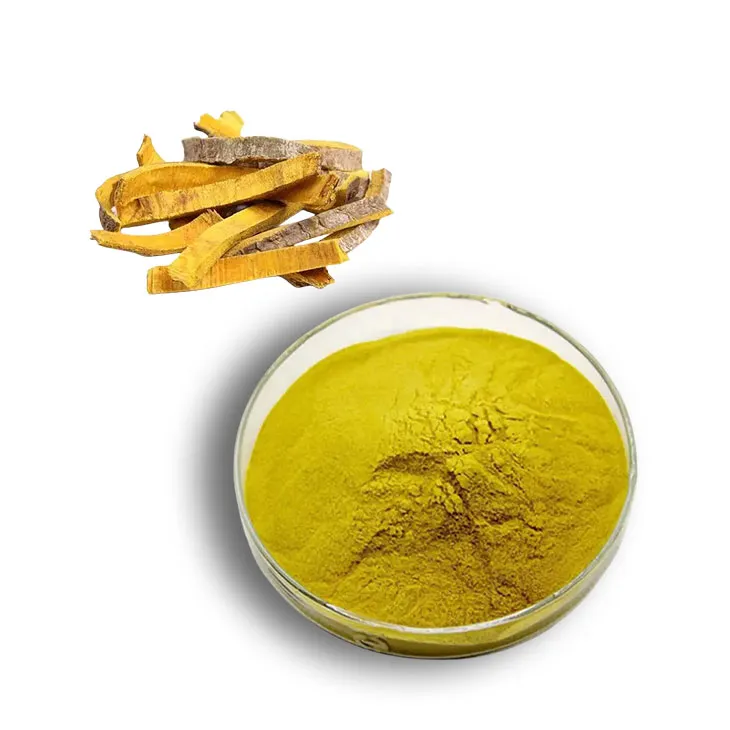- 0086-571-85302990
- sales@greenskybio.com
how much lycopene in one tomato
2023-09-27

1. What is a Tomato?
1. What is a Tomato?
A tomato is a versatile and widely cultivated fruit that is commonly used as a vegetable in cooking. Botanically classified as a berry, tomatoes are part of the nightshade family, Solanum lycopersicum. They are native to western South America and have been cultivated for centuries, with their popularity spreading globally due to their rich flavor and nutritional value.
Tomatoes come in various shapes, sizes, and colors, ranging from the classic red to yellow, green, orange, and even purple. They can be found in a variety of forms, such as cherry tomatoes, beefsteak tomatoes, and Roma tomatoes, each with its unique characteristics and uses in culinary dishes.
Tomatoes are rich in vitamins, minerals, and antioxidants, making them a nutritious addition to a balanced diet. They are particularly known for their high content of Lycopene, a powerful antioxidant that has been linked to numerous health benefits. As a staple in many cuisines, tomatoes are used in a multitude of dishes, from salads and sauces to main courses and desserts. Their versatility and health benefits make them a popular choice for both home cooks and professional chefs alike.
2. Lycopene Content in Tomatoes
2. Lycopene Content in Tomatoes
Tomatoes are a rich source of lycopene, a powerful antioxidant that belongs to the carotenoid family. Lycopene is responsible for the red color of tomatoes and contributes significantly to their health benefits. The lycopene content in a single tomato can vary depending on several factors, including the variety of tomato, its ripeness, and growing conditions.
On average, a medium-sized tomato, which weighs about 100 grams, contains approximately 3.37 milligrams of lycopene. However, this value can range from as low as 1.5 milligrams to as high as 5 milligrams or more, depending on the factors mentioned earlier.
There are several types of tomatoes, such as cherry tomatoes, plum tomatoes, and beefsteak tomatoes, each with varying lycopene content. Cherry tomatoes, for example, are smaller but have a higher concentration of lycopene per gram compared to larger varieties. A cup of cherry tomatoes (about 145 grams) can provide around 10 milligrams of lycopene.
The ripeness of a tomato also plays a crucial role in its lycopene content. Riper tomatoes tend to have a higher concentration of lycopene than unripe ones. As tomatoes ripen, their lycopene content increases, making fully ripened tomatoes a better choice for lycopene intake.
Growing conditions, such as sunlight exposure and soil quality, can also influence the lycopene content in tomatoes. Tomatoes grown in well-drained, fertile soil and exposed to ample sunlight tend to have higher lycopene levels.
In summary, the lycopene content in a single tomato can vary, but on average, a medium-sized tomato provides around 3.37 milligrams of lycopene. Factors such as tomato variety, ripeness, and growing conditions can significantly impact the lycopene levels in tomatoes. To maximize lycopene intake, choose ripe, high-quality tomatoes, and consider incorporating a variety of tomato types into your diet.
3. Factors Affecting Lycopene Levels
3. Factors Affecting Lycopene Levels
Lycopene is a powerful antioxidant and a key nutrient found in tomatoes. However, the amount of lycopene in a single tomato can vary significantly based on several factors. Understanding these factors can help you make informed decisions about your diet and ensure you're getting the most out of your tomato consumption.
1. Tomato Variety: Different types of tomatoes contain varying amounts of lycopene. For instance, red tomatoes generally have higher lycopene levels than yellow or green varieties. Cherry tomatoes and heirloom tomatoes are also known to have higher concentrations of this beneficial compound.
2. Ripeness: The ripeness of a tomato plays a crucial role in its lycopene content. Riper tomatoes, which are typically redder in color, contain more lycopene than unripe or partially ripe tomatoes. As tomatoes ripen, the lycopene content increases, making fully ripened tomatoes a better choice for higher lycopene intake.
3. Season and Growing Conditions: Tomatoes grown in sunny, warm climates tend to have higher lycopene levels due to increased exposure to sunlight. Additionally, tomatoes that are allowed to ripen on the vine rather than being picked green and ripened off the vine can have higher lycopene content.
4. Cooking Methods: Cooking tomatoes can actually increase the bioavailability of lycopene. Heat helps break down the tomato's cell walls, making it easier for the body to absorb the lycopene. Cooking methods such as baking, roasting, or processing tomatoes into sauce or paste can enhance lycopene levels.
5. Processing: Processed tomato products like tomato sauce, paste, and canned tomatoes can have higher lycopene levels compared to fresh tomatoes. The processing methods used can concentrate the lycopene, making it more readily available for absorption.
6. Genetic Factors: Some research suggests that genetic factors can influence the lycopene content in tomatoes. Certain tomato varieties may be bred to have higher or lower levels of this nutrient.
7. Storage Conditions: How and where you store tomatoes can also affect their lycopene levels. Exposure to light and heat can degrade lycopene, so it's best to store tomatoes in a cool, dark place.
In conclusion, the lycopene content in a single tomato can be influenced by a variety of factors, including the type of tomato, its ripeness, growing conditions, cooking methods, processing, genetic factors, and storage conditions. By considering these factors, you can optimize your tomato consumption to get the most lycopene possible, supporting your overall health and well-being.
4. Health Benefits of Lycopene
4. Health Benefits of Lycopene
Lycopene is a powerful antioxidant that provides a multitude of health benefits. Here are some of the key advantages of incorporating lycopene-rich foods, such as tomatoes, into your diet:
1. Heart Health: Lycopene has been linked to a reduced risk of heart disease. It helps to lower bad cholesterol levels and blood pressure, which are significant risk factors for cardiovascular problems.
2. Cancer Prevention: Studies have shown that lycopene may play a role in reducing the risk of certain types of cancer, including prostate, lung, and stomach cancer. Its antioxidant properties help neutralize free radicals that can damage cells and lead to cancer.
3. Skin Health: Lycopene can protect the skin from harmful UV rays, reducing the risk of sunburn and skin damage. It also helps in maintaining skin elasticity and reducing the signs of aging.
4. Eye Health: Lycopene is beneficial for eye health, particularly in preventing age-related macular degeneration, a leading cause of vision loss in older adults.
5. Anti-Inflammatory Properties: Lycopene has anti-inflammatory properties that can help reduce inflammation in the body, which is beneficial for conditions like arthritis.
6. Immune System Support: Antioxidants like lycopene can strengthen the immune system by protecting cells from oxidative damage, which can otherwise weaken the immune response.
7. Bone Health: Some research suggests that lycopene may help maintain bone health by supporting bone mineral density.
8. Improved Fertility: Lycopene has been found to improve sperm quality and quantity in men, which can contribute to better fertility outcomes.
9. Brain Health: The antioxidant properties of lycopene may help protect the brain from oxidative stress, potentially reducing the risk of neurodegenerative diseases like Alzheimer's and Parkinson's.
10. Enhanced Energy Levels: Antioxidants like lycopene can help combat fatigue and boost energy levels by reducing oxidative stress in the body.
Incorporating tomatoes and other lycopene-rich foods into your diet can be a simple yet effective way to reap these health benefits. It's important to note that cooking tomatoes can increase the bioavailability of lycopene, making it easier for your body to absorb this beneficial nutrient.
5. How to Increase Lycopene Intake
5. How to Increase Lycopene Intake
To maximize the health benefits of lycopene, it's essential to understand how to increase its intake effectively. Here are several strategies to help you incorporate more lycopene into your diet:
1. Choose the Right Tomatoes:
- Opt for ripe, red tomatoes, as they generally contain higher levels of lycopene compared to green or unripe tomatoes.
2. Cook Your Tomatoes:
- Cooking tomatoes can increase the bioavailability of lycopene. The heat from cooking breaks down the cell walls, making it easier for your body to absorb lycopene.
3. Use Healthy Fats:
- Pair tomatoes with a source of healthy fats, such as olive oil or avocado, to enhance lycopene absorption. Fats help transport lycopene through the digestive system.
4. Consume Tomato Products:
- Processed tomato products like tomato sauce, paste, and canned tomatoes can have higher lycopene content due to the concentration process. However, be mindful of added sugars and sodium.
5. Diversify Your Sources:
- Include other lycopene-rich foods in your diet, such as watermelon, pink grapefruit, and guava. While these fruits have lower lycopene content than tomatoes, they can still contribute to your overall intake.
6. Eat a Variety of Tomatoes:
- Different types of tomatoes, such as cherry tomatoes and heirloom varieties, can have varying levels of lycopene. Experiment with different types to find those you enjoy most.
7. Store Tomatoes Properly:
- Store tomatoes at room temperature for a few days to allow them to ripen further, which can increase their lycopene content. Once ripe, they can be refrigerated to slow down the ripening process.
8. Incorporate into Meals:
- Use tomatoes in various dishes, such as salads, pasta sauces, soups, and sandwiches, to increase your daily lycopene intake.
9. Monitor Portion Sizes:
- While tomatoes are low in calories, consuming large quantities can contribute to a high intake of lycopene. Be mindful of portion sizes to balance your overall diet.
10. Be Mindful of Preparation Methods:
- Avoid overcooking tomatoes, as excessive heat can degrade lycopene. Light cooking methods, such as sautéing or baking, are preferable.
By incorporating these strategies into your daily routine, you can effectively increase your lycopene intake and reap the associated health benefits. Remember, a balanced diet with a variety of fruits and vegetables is key to maintaining good health.
6. Conclusion
6. Conclusion
In conclusion, tomatoes are a versatile and nutrient-rich fruit that can be enjoyed in various forms. They are packed with lycopene, a powerful antioxidant that offers numerous health benefits. The lycopene content in one tomato can vary depending on factors such as variety, ripeness, and processing methods. However, consuming tomatoes regularly can significantly contribute to your daily lycopene intake.
It is essential to consider these factors when choosing tomatoes to maximize their lycopene content. Cooking tomatoes, using them in sauces, or consuming them with healthy fats can enhance lycopene absorption. Additionally, incorporating tomato-based products like tomato paste, ketchup, and tomato juice into your diet can further increase your lycopene intake.
Lycopene's health benefits are well-documented, including its role in reducing the risk of chronic diseases such as cancer and heart disease. By incorporating tomatoes and tomato-based products into your diet, you can reap these benefits and support overall health.
In summary, tomatoes are a valuable source of lycopene, and their consumption can contribute to a healthier lifestyle. By being mindful of factors affecting lycopene levels and incorporating various tomato products into your diet, you can maximize the health benefits of this powerful antioxidant.
- ▶ Hesperidin
- ▶ Citrus Bioflavonoids
- ▶ Plant Extract
- ▶ lycopene
- ▶ Diosmin
- ▶ Grape seed extract
- ▶ Sea buckthorn Juice Powder
- ▶ Fruit Juice Powder
- ▶ Hops Extract
- ▶ Artichoke Extract
- ▶ Mushroom extract
- ▶ Astaxanthin
- ▶ Green Tea Extract
- ▶ Curcumin
- ▶ Horse Chestnut Extract
- ▶ Other Product
- ▶ Boswellia Serrata Extract
- ▶ Resveratrol
- ▶ Marigold Extract
- ▶ Grape Leaf Extract
- ▶ New Product
- ▶ Aminolevulinic acid
- ▶ Cranberry Extract
- ▶ Red Yeast Rice
- ▶ Red Wine Extract
-
Maca Extract
2023-09-27
-
Phellodendron Extract
2023-09-27
-
Epimedium extract powder
2023-09-27
-
Lemon Balm Extract
2023-09-27
-
Genistein
2023-09-27
-
Bilberry Extract
2023-09-27
-
Hericium erinaceus extract powder
2023-09-27
-
Yohimbine Bark Extract
2023-09-27
-
White mustard seed extract
2023-09-27
-
Chasteberry Extract
2023-09-27





















